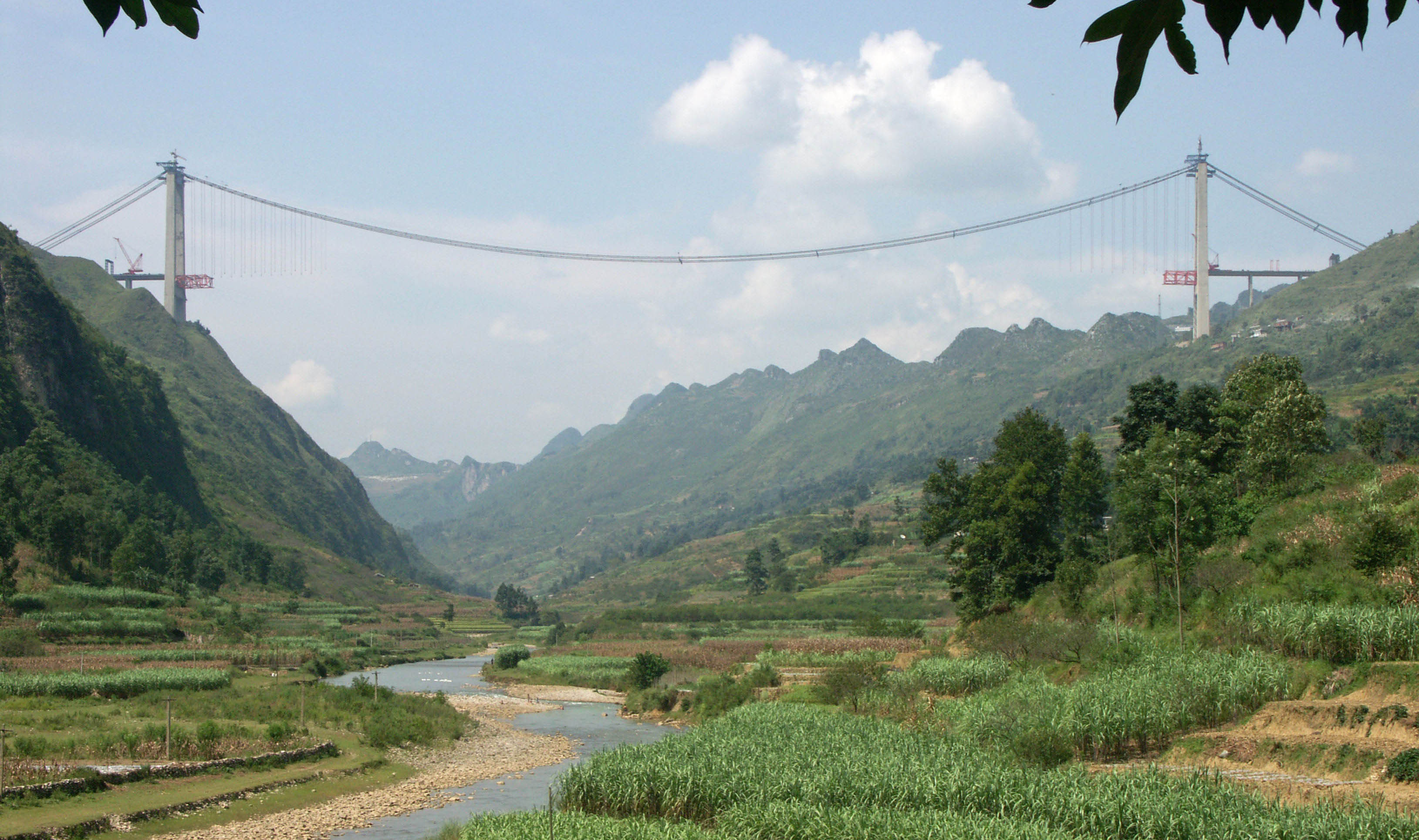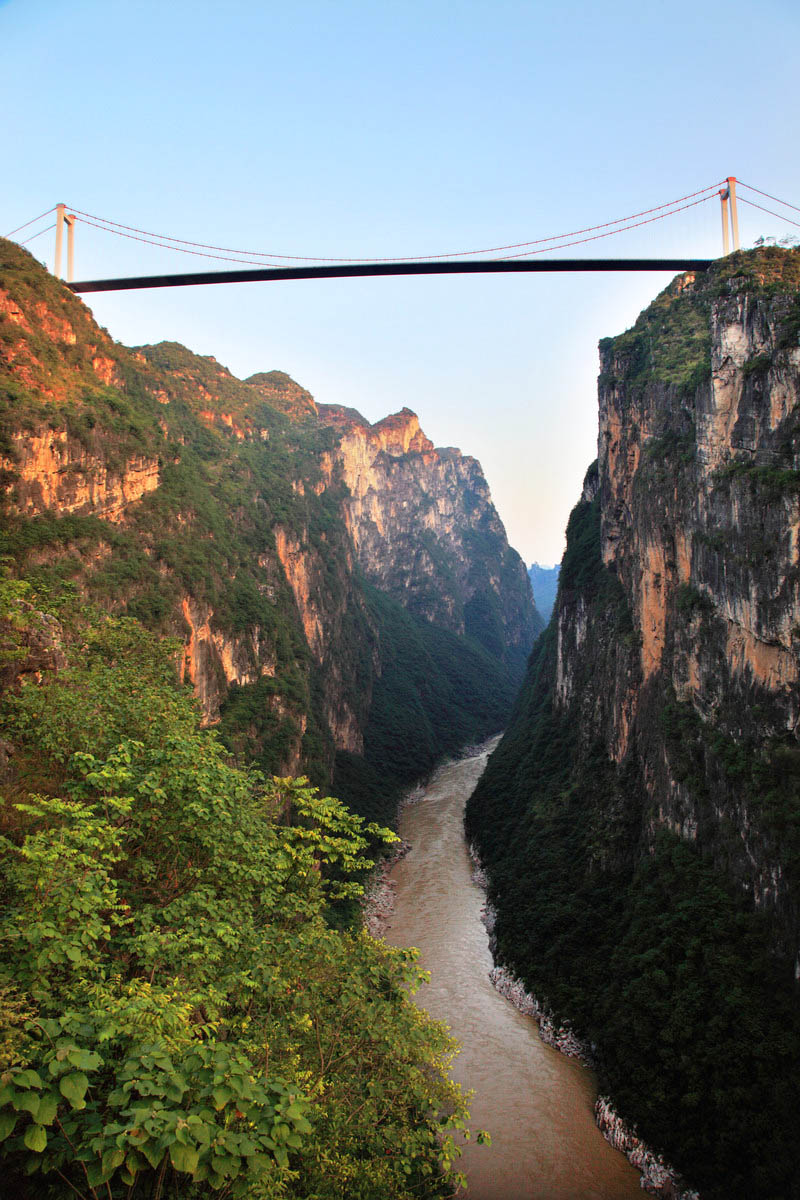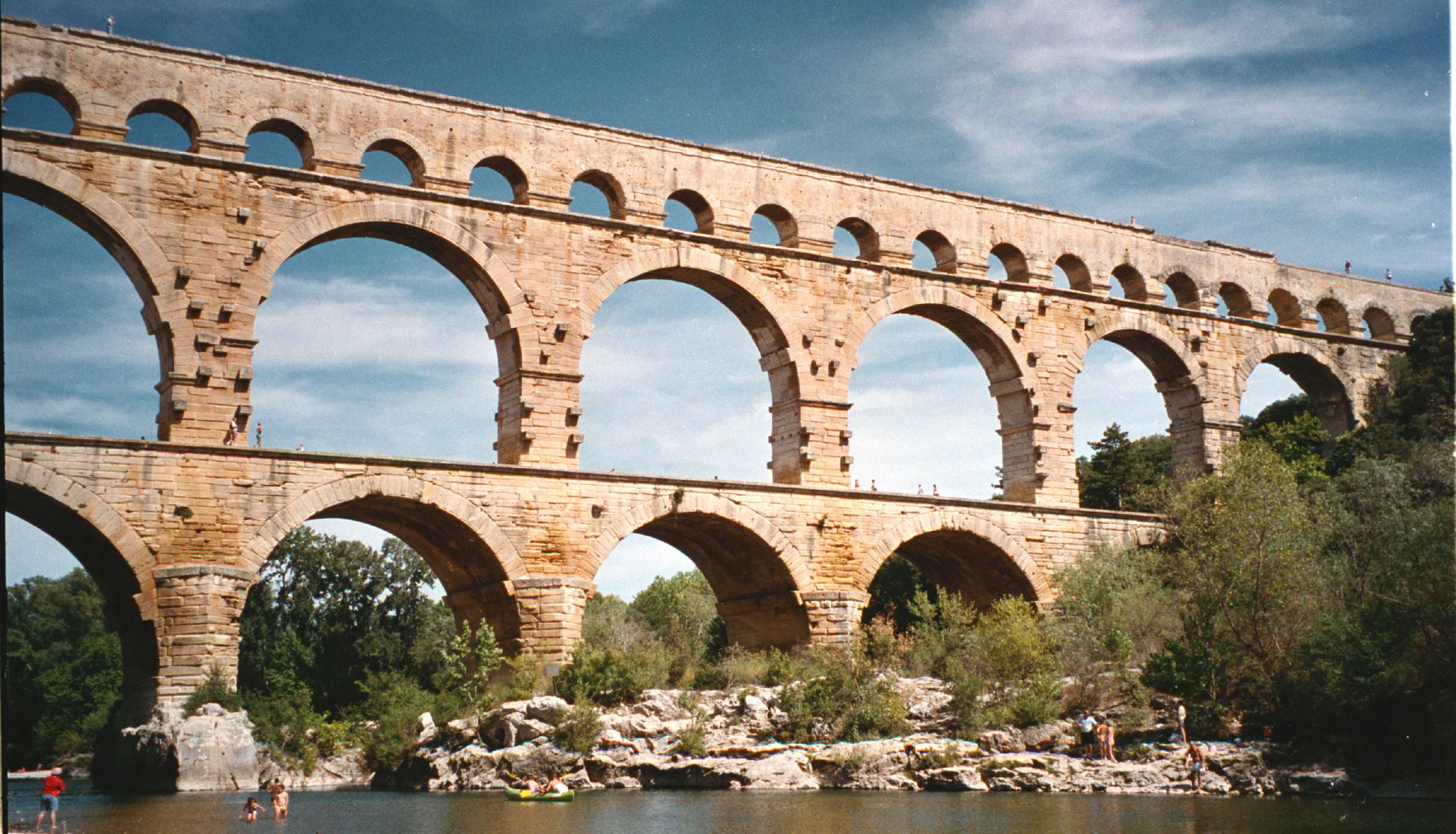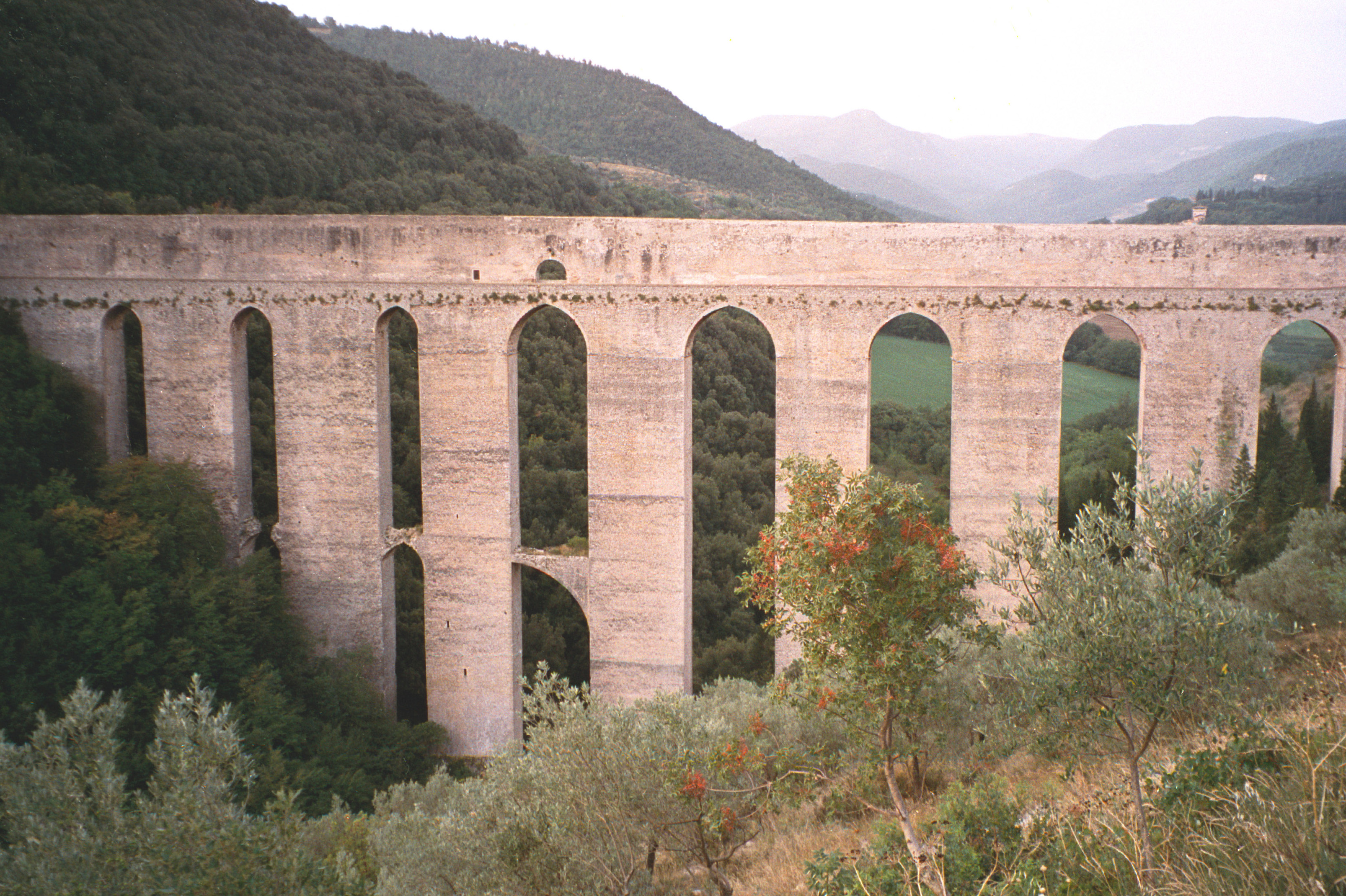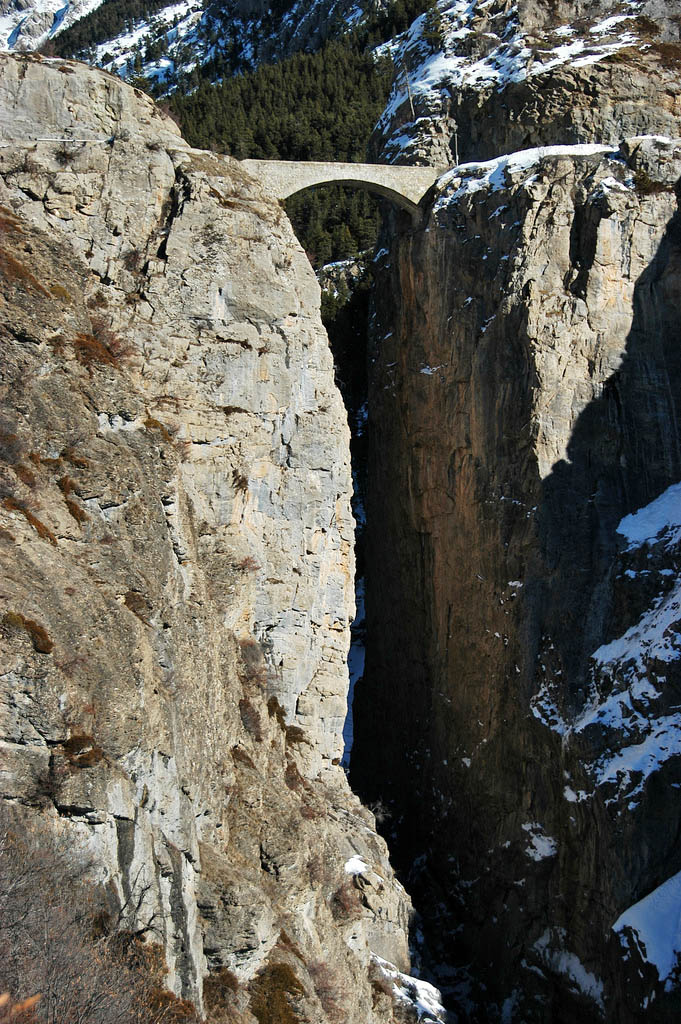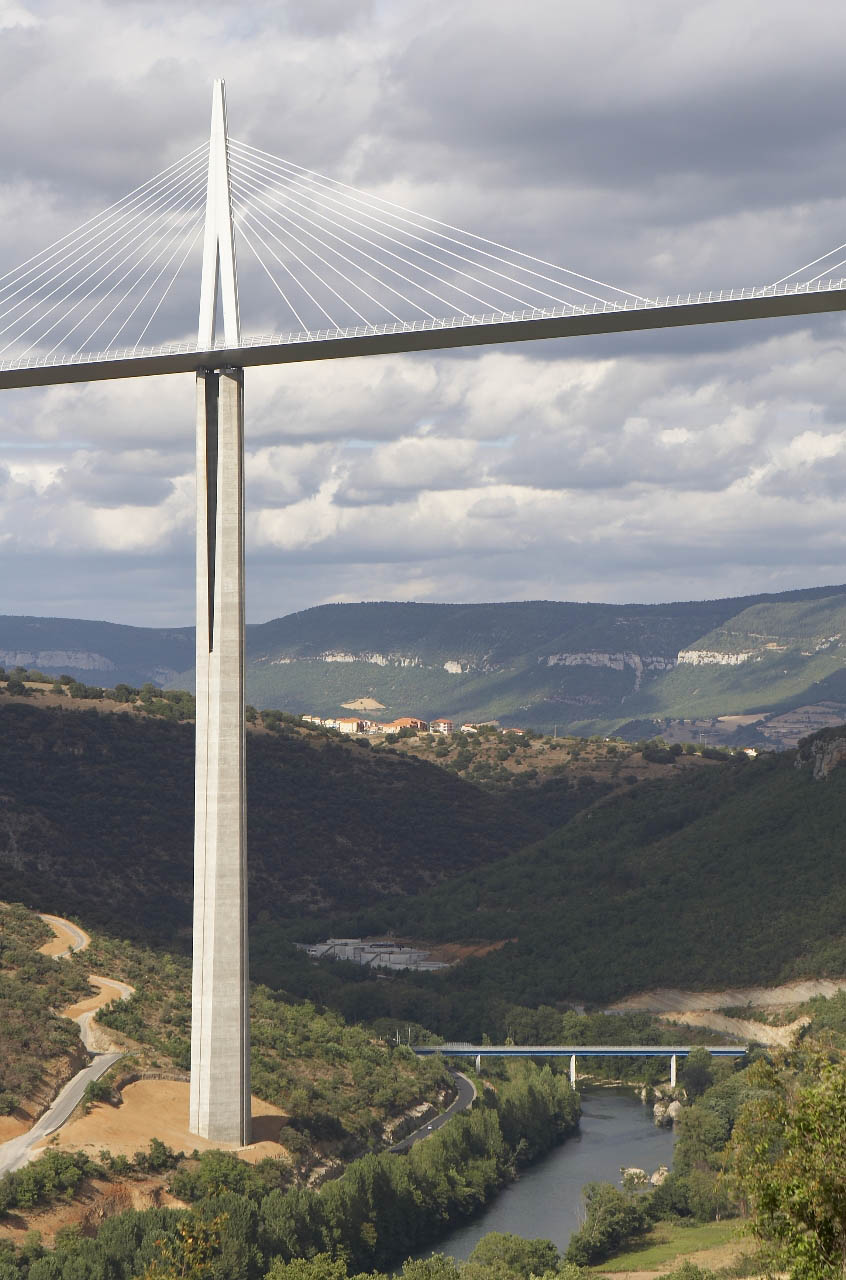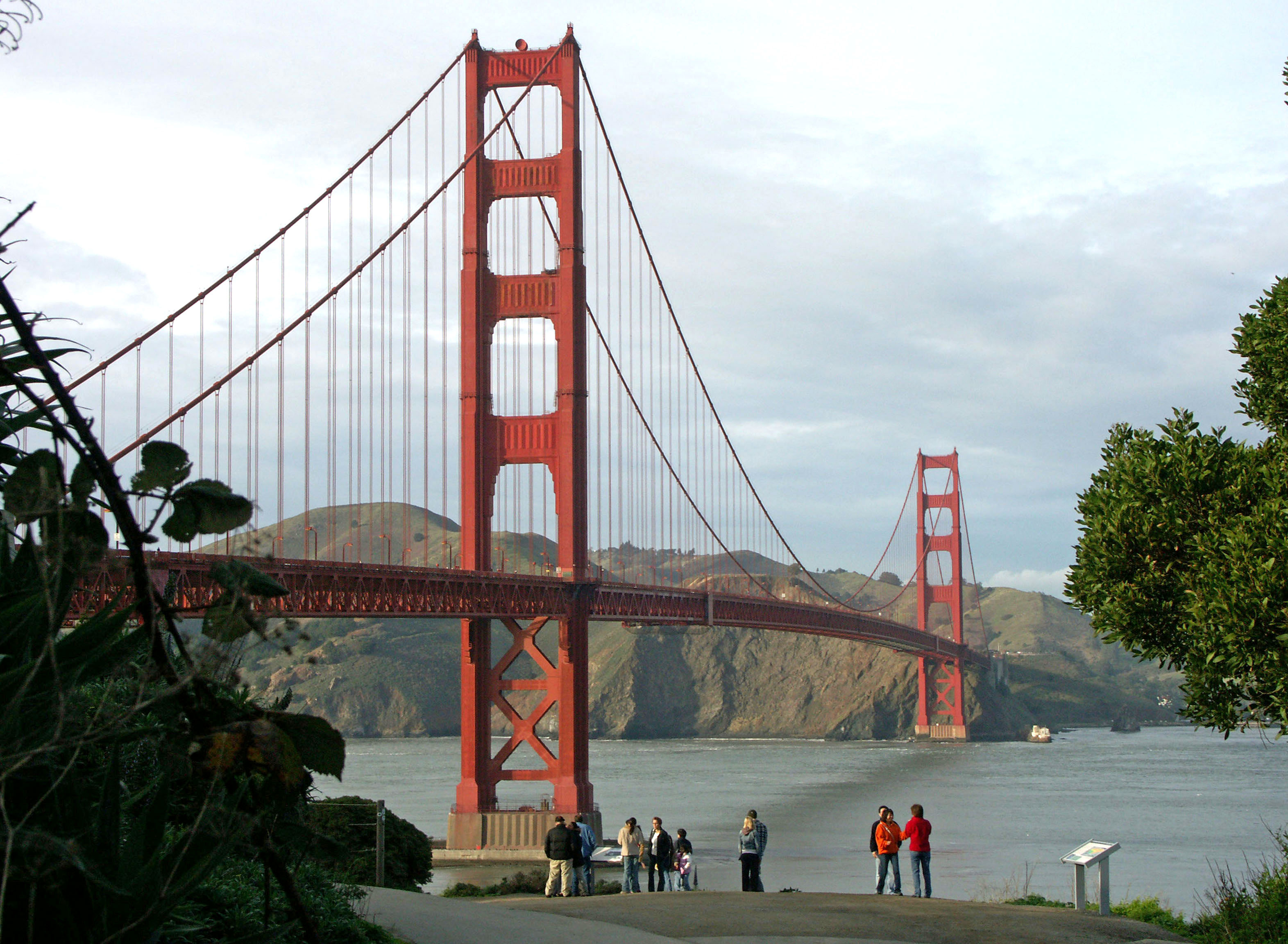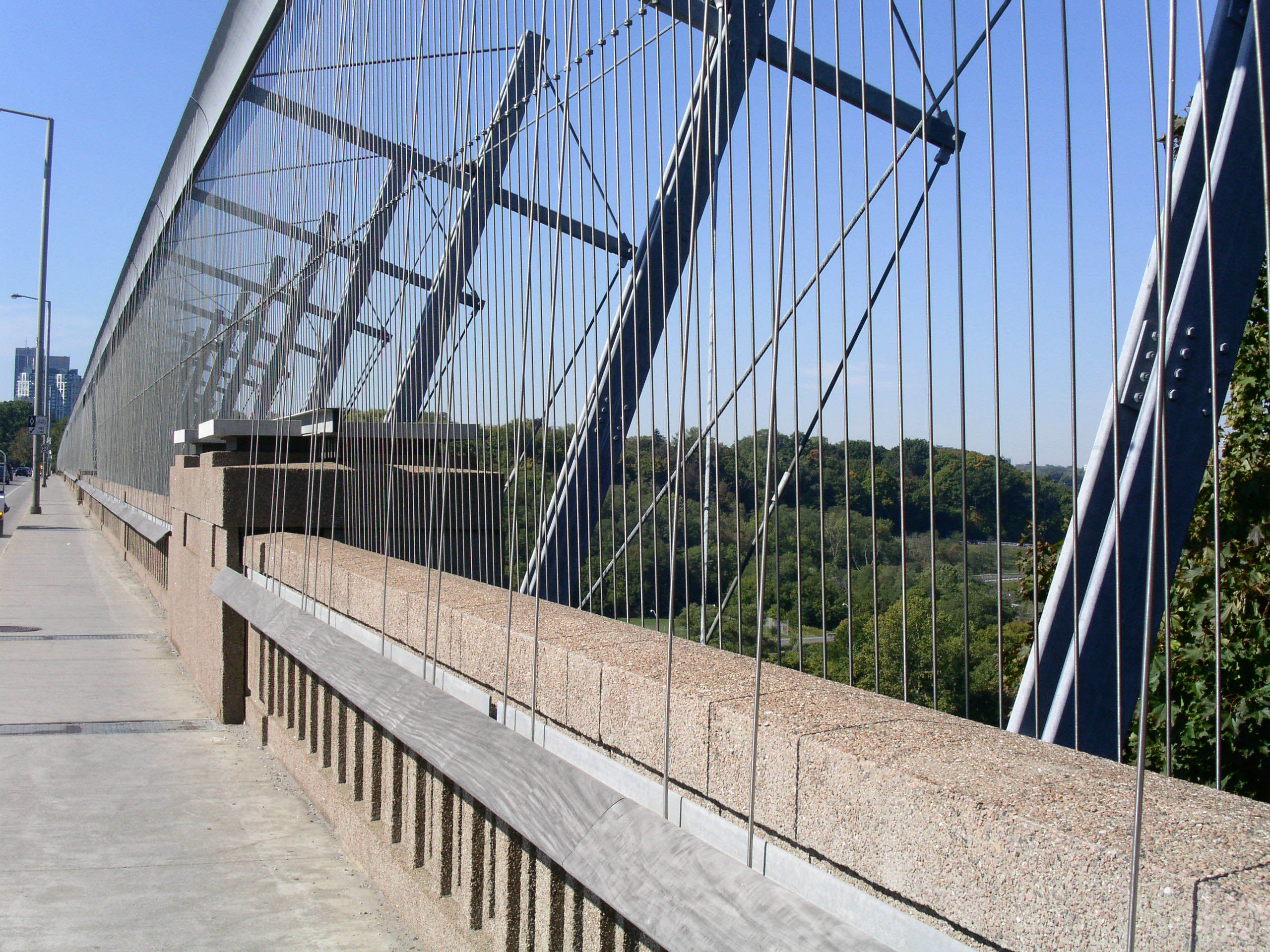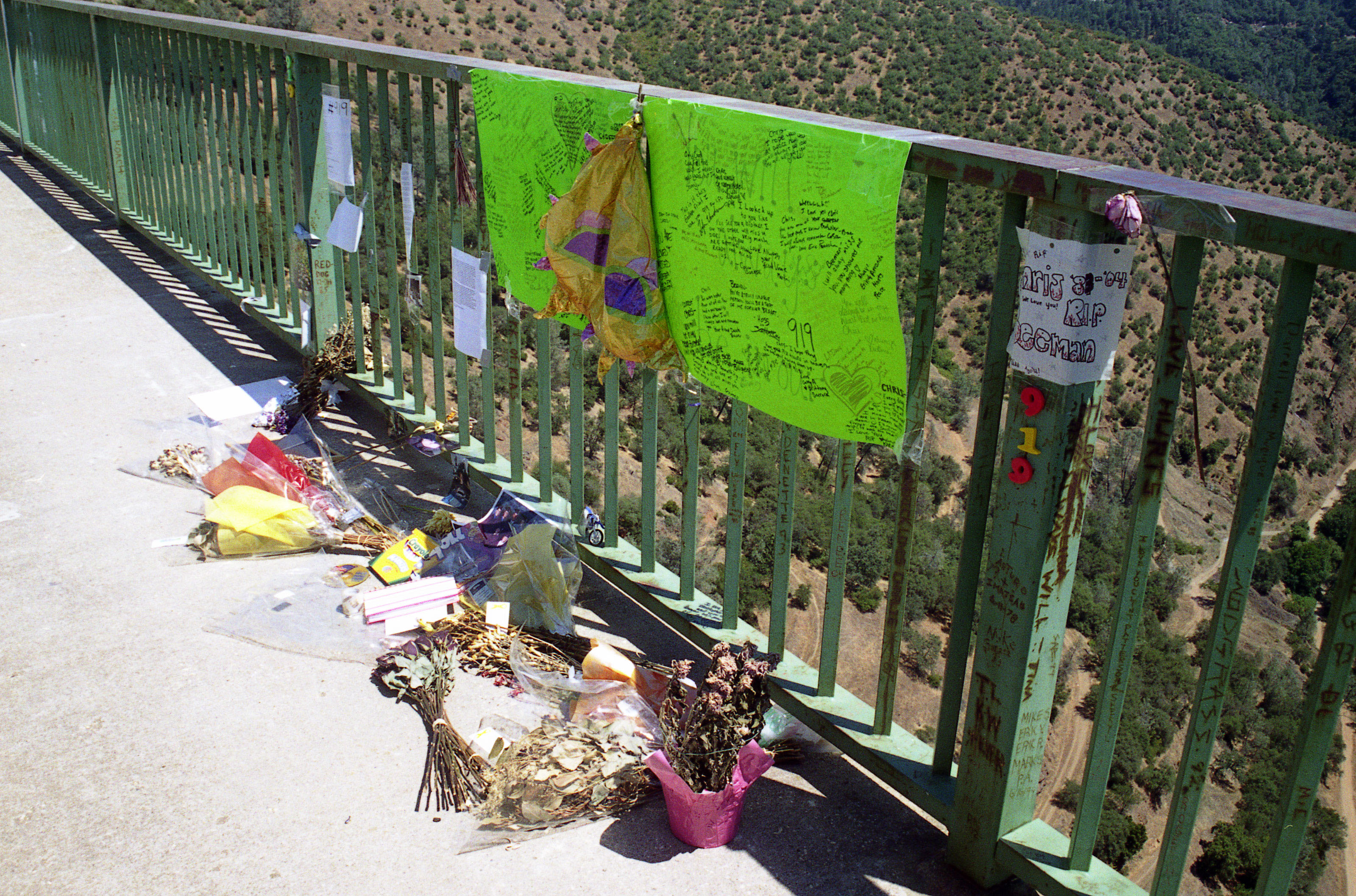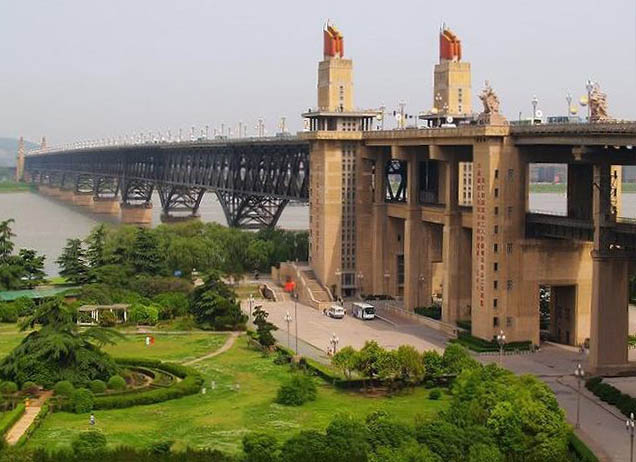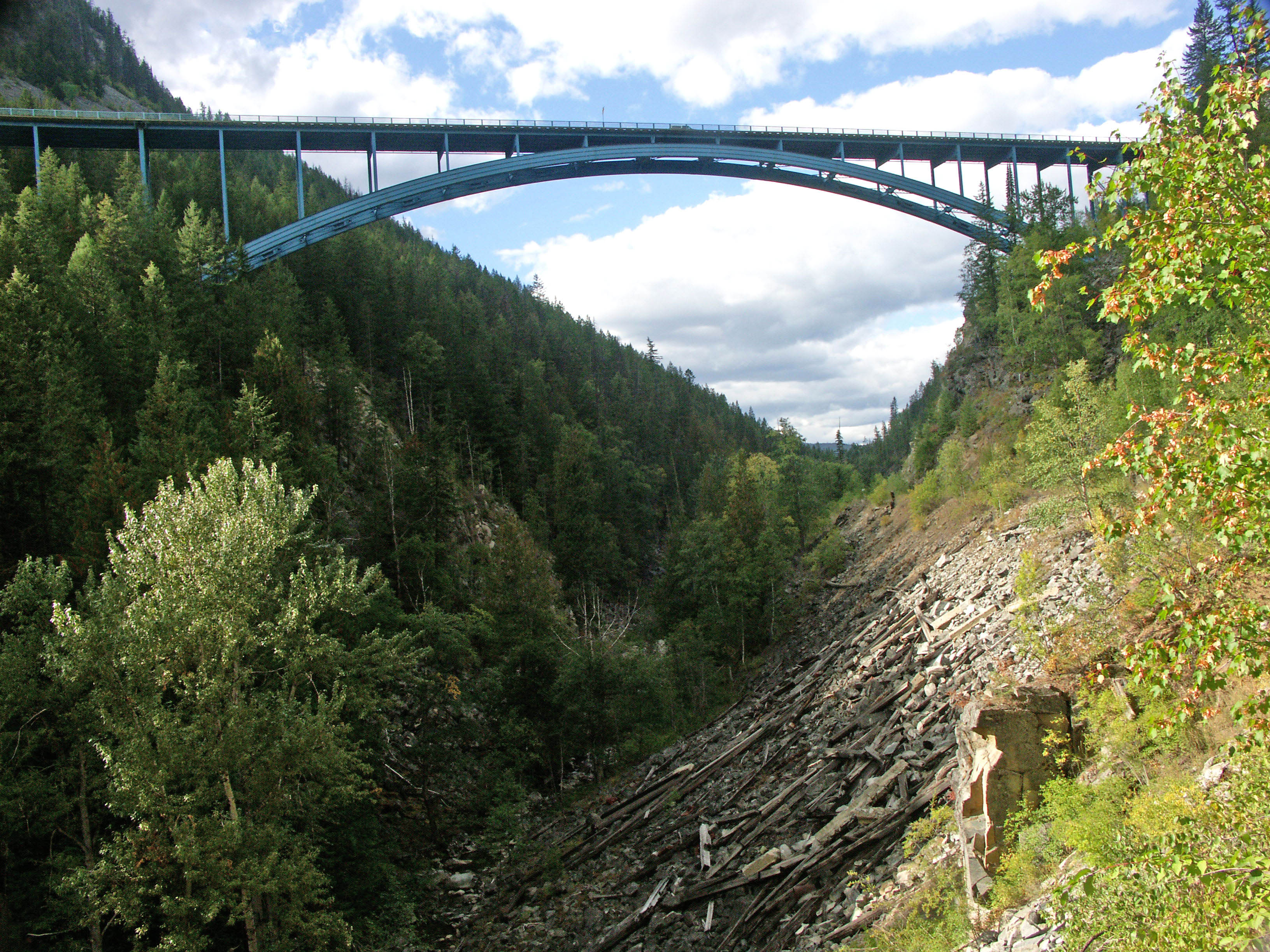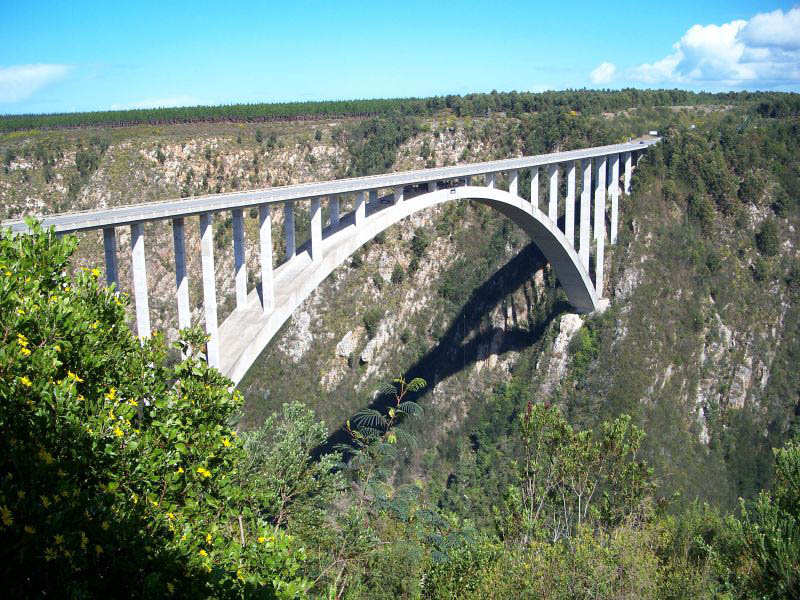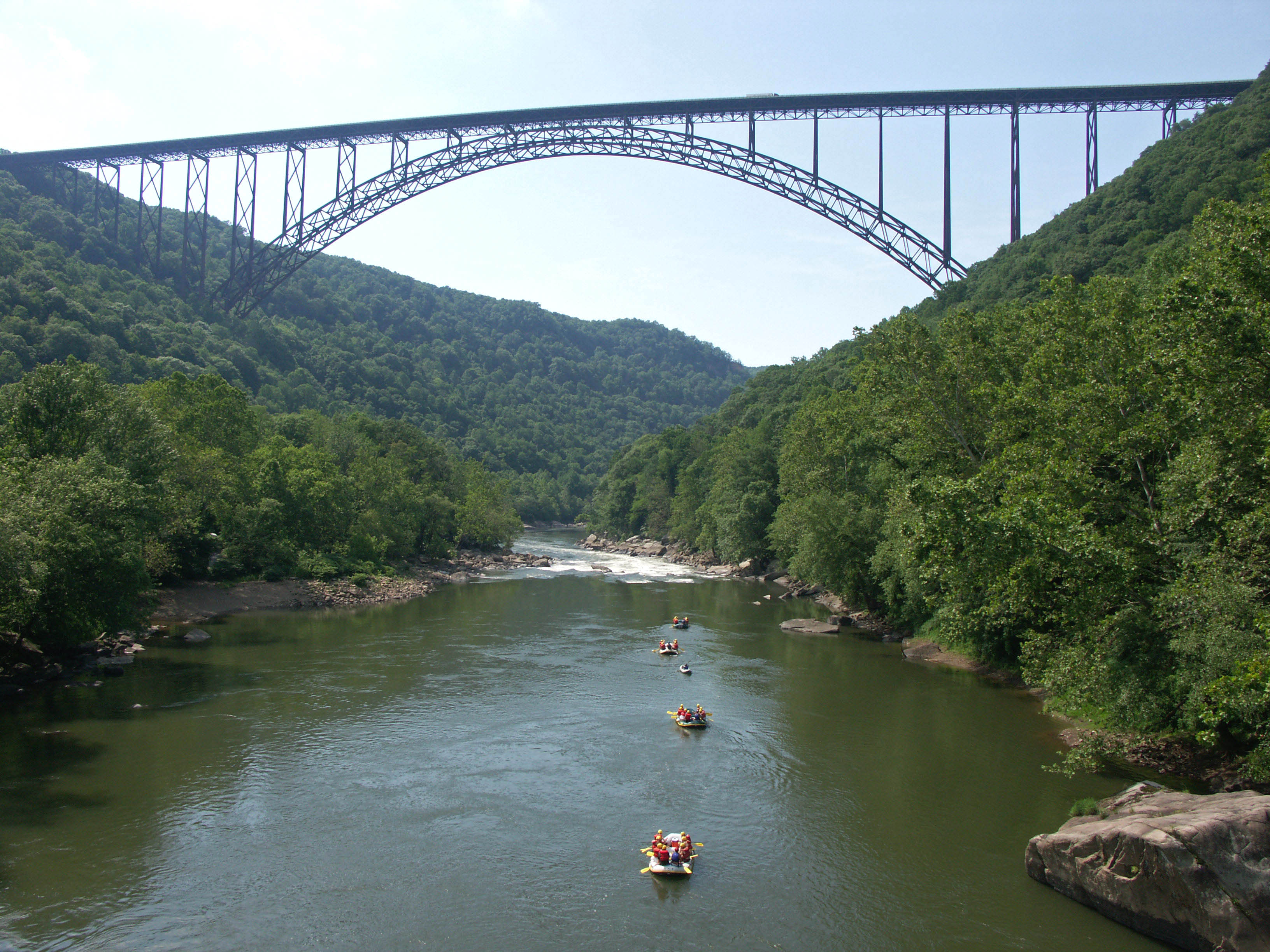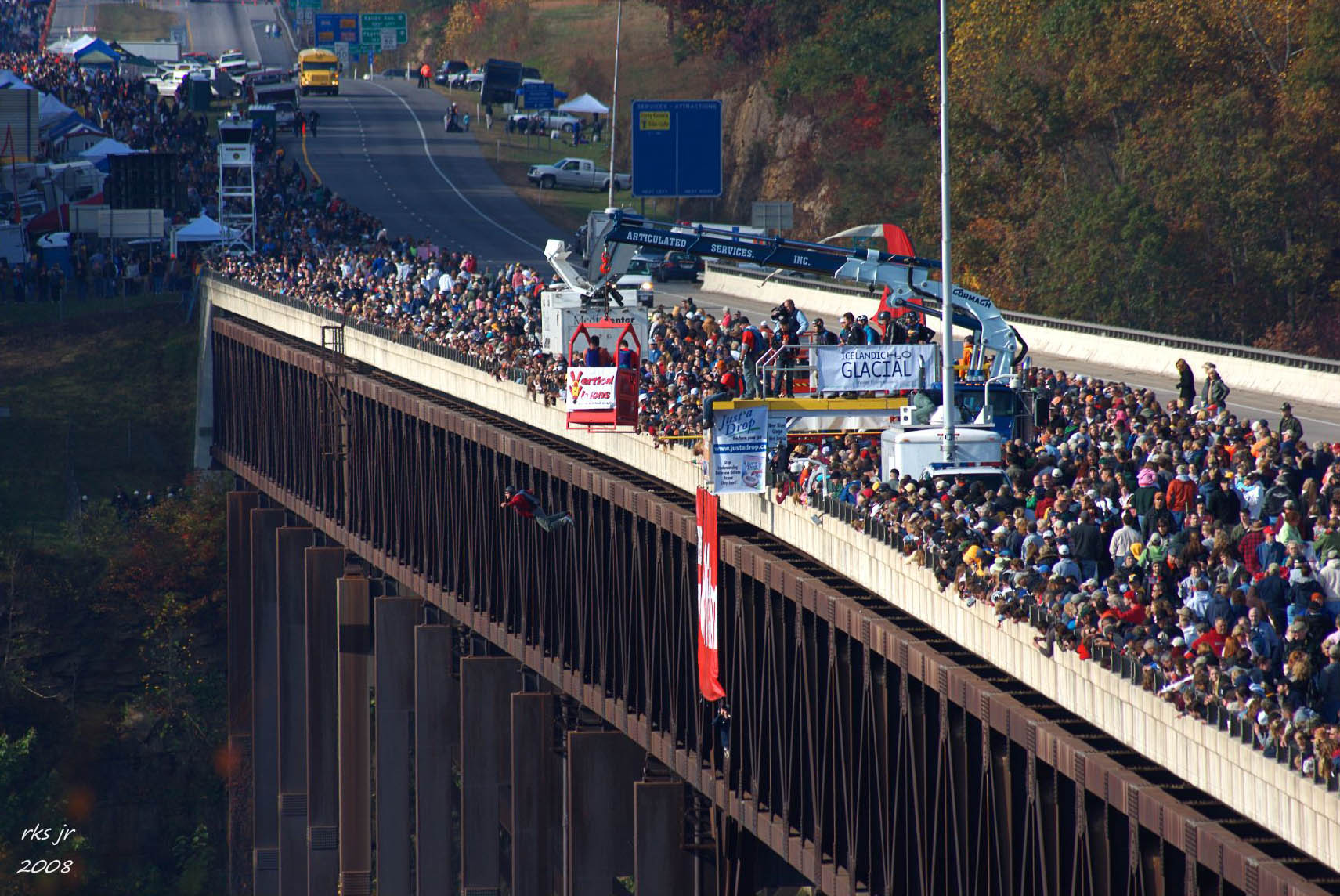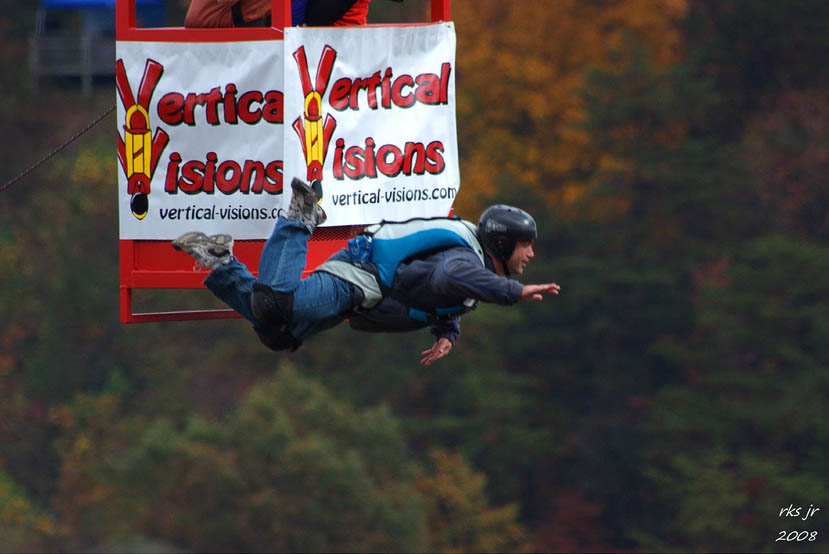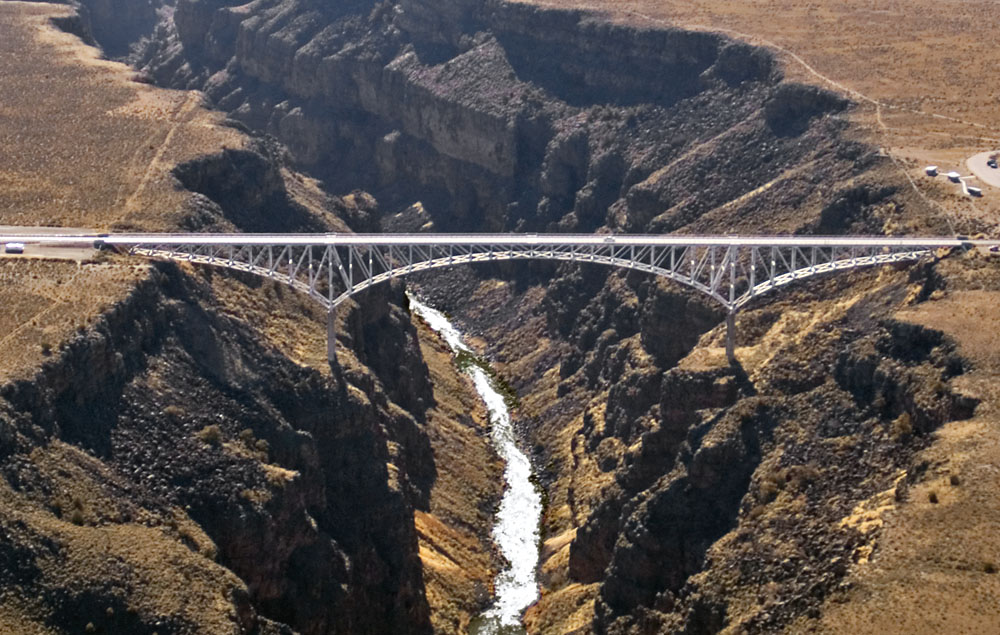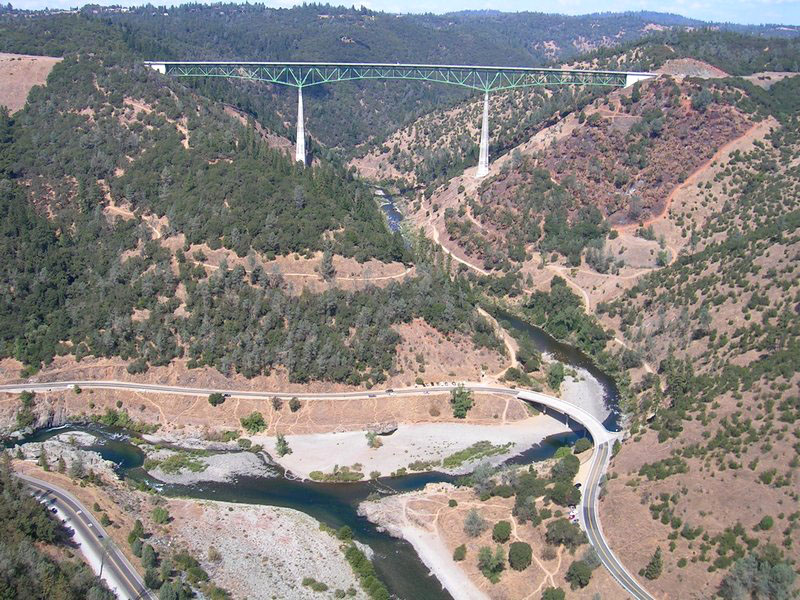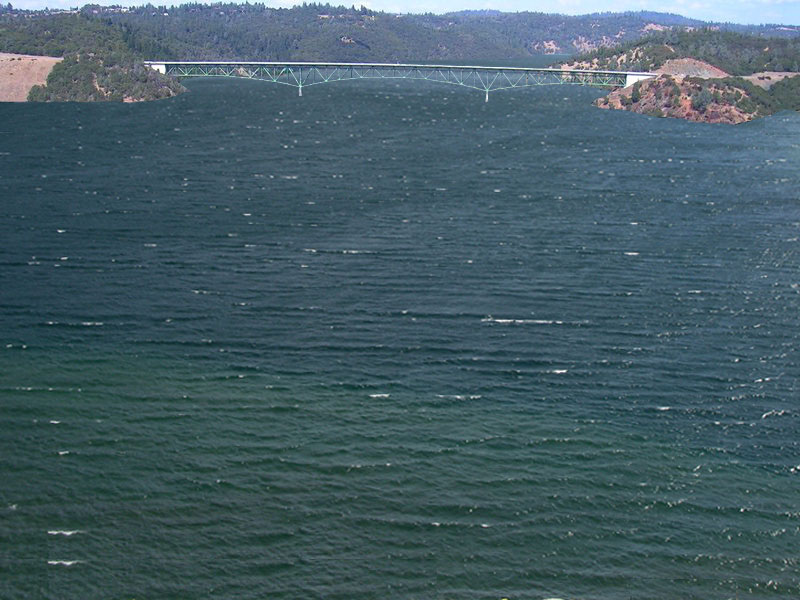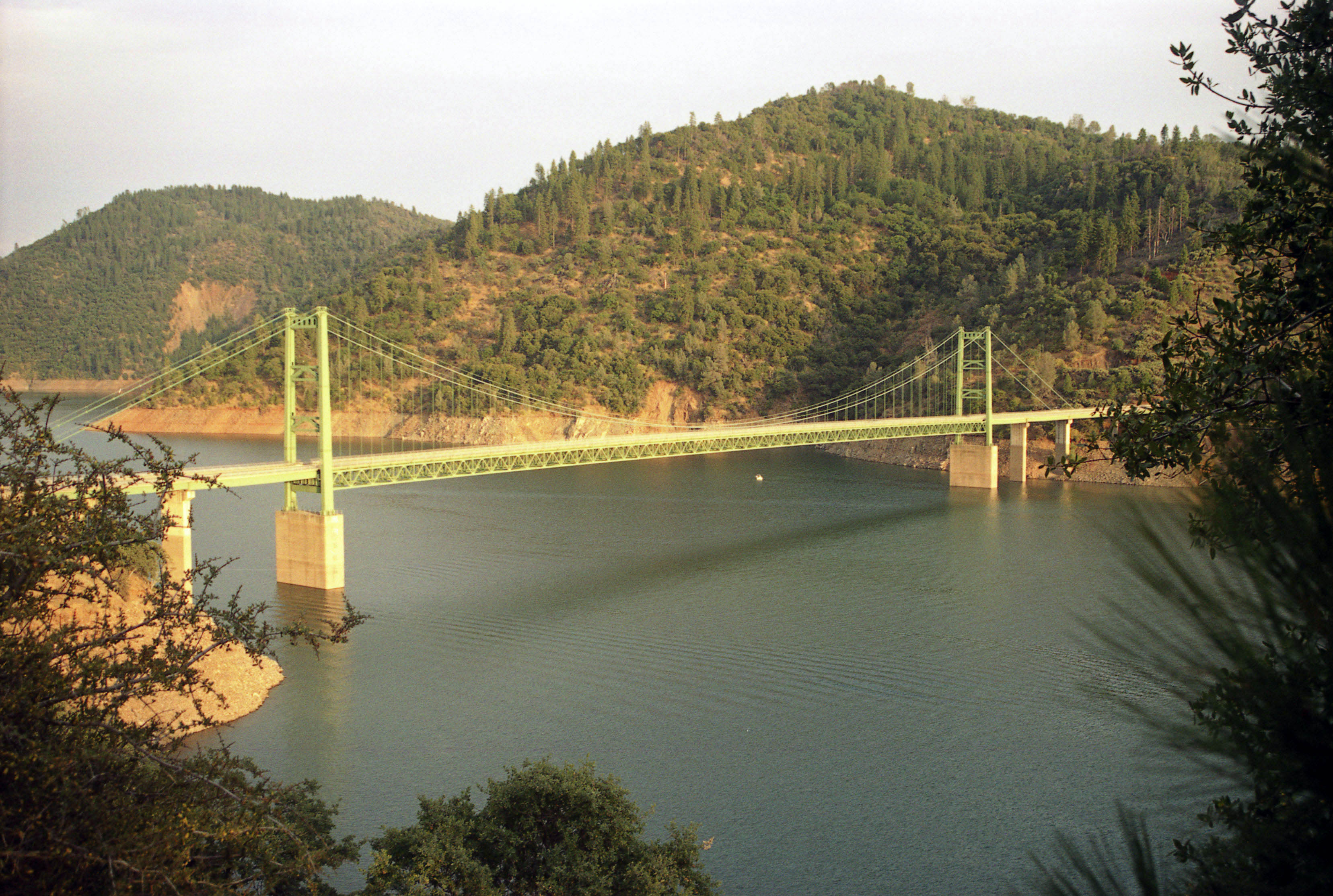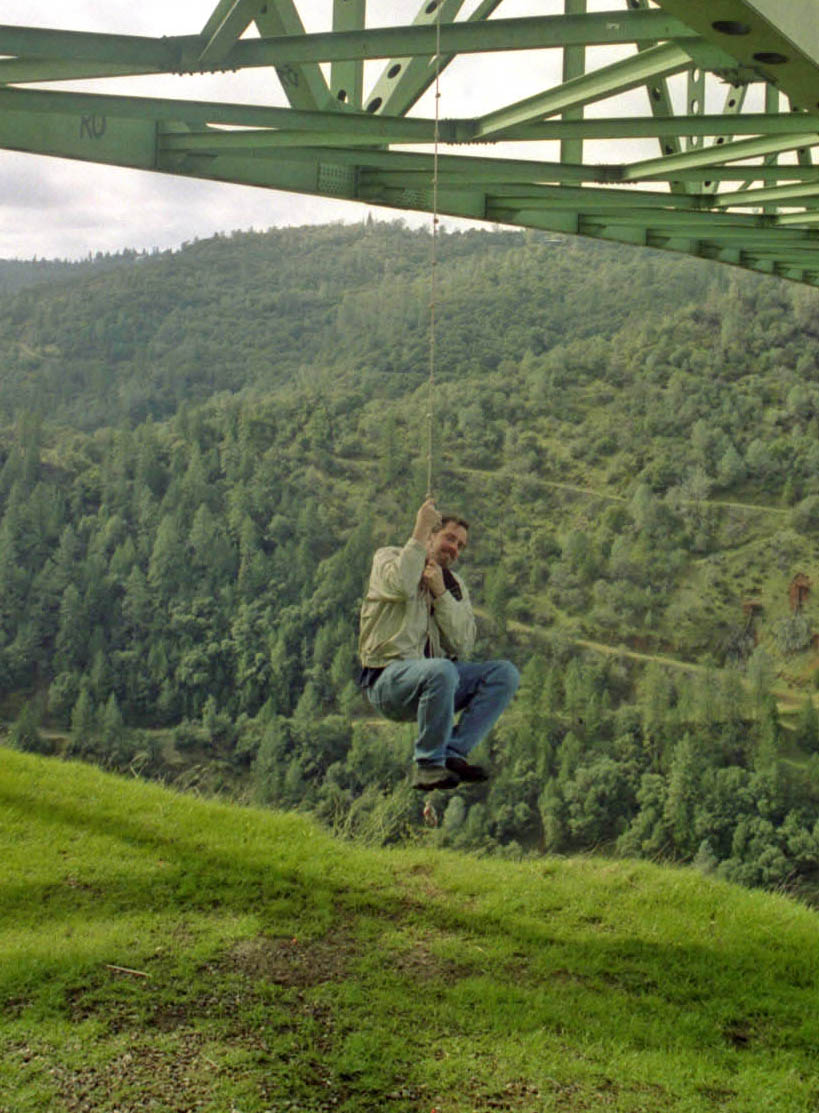Main Page
Welcome to HighestBridges.com
Introduction
Welcome to the only web site ever dedicated to the Highest Bridges of the World. Here you will find in-depth coverage on 500 of the highest bridges ever constructed. The minimum height level for inclusion within the main body of this web site is 328 feet (100 meters) as measured from the deck level to the water or ground below it. There is an additional list of more than 100 bridges between 295 feet (90 meters) and 328 feet (100 meters) high. In late 2010, additional categories will debut with over 800 of the highest bridges in North America as well as the 50 tallest bridges of the world.
Throughout the history of bridges, the discussion of size has almost always focused on length - usually of the main span. This is natural given that the design and construction of a long span is usually the greatest challenge to an engineer who is attempting to cross over a deep body of water with a limited number of supports and the least amount of material. Of less interest to bridge engineers but just as effective aesthetically is the height of a bridge. A vast, vertical void below the structure seems to make the mass of the bridge more gravity defying, more surreal, more magical.
Up until the new millennium, there were few bridges on earth that even came close to challenging the height record of the Royal Gorge suspension bridge in the U.S. state of Colorado. Built in 1929, the wood planked suspension span nearly became the dictionary definition of how spectacular a high bridge could be. That all changed in 2001 when an astounding succession of 10 higher bridges began opening in the decade that followed. Most of this activity occurred in China, a country that as recently as 1994 had just one bridge over 400 feet (122 meters). The Chinese have embarked on what can only be called an explosion of bridge construction. Their goal is nothing less than the complete connection of every major and minor city in the country with a full web of high speed expressways and rail lines. Even more incredible is the desire to have much of it done in just 20 years - half the time it would have taken in any other industrialized nation. This breathtaking pace has resulted in an average of 10,000 new bridge openings per year. This is no small task when you consider that the entire western half of China is mountainous. China is already home to half of the world's 100 highest bridges!
The highest of China’s many high bridges are located primarily in the 4 western Provinces of Guizhou, Hubei, Yunnan and Chongqing. This region contains an astounding 10 of the world’s 12 highest bridges. All ten of these exceed 1,115 feet (340 meters) in height while six have held the world record for highest road or rail bridge including the latest Guinness book champ, the stunning 1,854 foot high (565 meters) Beipanjiang Duge Bridge. More than 50 others in the region exceed 500 feet (152 meters) in height. The big cities of Yichang, Chongqing and Guiyang are ground zero for those looking to travel to these bridges.
After China, the country with the greatest number of high bridges is Italy. For a region that is only the size of the U.S. state of California, it is simply amazing how many towering viaducts or viadottos are spread out among Italy’s expansive array of Autostrada. Built mostly in the 1970s and 80s, this web of bridge-filled motorways includes the A3, A10, A12, A15, and A26. The most recent addition to this family is the breathtaking A20 motorway that opened in 2004 on the island of Sicily between Palermo and Messina. Perched hundreds of feet above the Mediterranean coast, this 4-lane marvel crosses dozens of colossal beam bridges that are nearly always wedged between two large tunnels. Italy is also home to 6 of the 10 highest bridge piers in Europe.
Japan ranks 3rd among the world’s high bridge countries despite having only two entries on the list of the world’s 100 highest. This is possible because Japan is rich with bridges in the lower height range of 300 feet (90 meters) to 500 feet (150 meters). After Japan, the United States would rank 4th followed by France, Mexico, Germany, Spain, Austria and Switzerland. Beyond these 10 countries, few others have more than two or three bridges above 300 feet (90 meters) except for Canada, Algeria and South Africa.
High Bridge History
Beipanjiang Duge Bridge is the latest of just 14 bridges in history to hold the title of “World’s Highest”. The first was the famous Pont Du Gard stone aqueduct located near Nimes, France. Completed around 90 B.C., the Roman structure has three levels of stacked arches that reach a height of 160 feet (49 meters). More than 200 years passed before the Puente Alcántara became the new record holder with 5 semicircular arches that cross 164 feet (50 meters) above the Tajo river west of Caceres, Spain. Italy’s massive Ponte Delle Torri in Spoleto surpassed the Spanish bridge with a height of 269 feet (82 meters) though the exact completion date of the aqueduct is unknown but probably dates to the 13th or 14th century.
China's 279 foot (85 meters) high Tiesuo chain bridge took the crown in 1704 AD during the Wanli era in Hubei Province and remained the world's highest bridge for almost a century until 1793 when the Puente Nueveo Bridge was completed in Ronda, Spain. Reportedly 322 foot (98 meter) high, the Puente Nuevo or New Ronda bridge has become a huge tourist attraction. It would be the last time a stone or masonry arch bridge would hold the height record.
By the early 1800s, suspension bridges were becoming the bridge of choice for spans of more than 200 feet (60 meters). So in 1839, French engineer E. Belin had no choice but to cross the 482 foot (147 meter) deep chasm of the Usses river with a suspension bridge in the mountainous Rhône-Alpes region of France. Named after Charles-Albert, the king of Piedmont, the 200 meter long bridge is also referred to as the Pont Caille. The French bridge kept the height record in Europe for 73 years before a higher suspension bridge opened across the Rhumel river gorge in the north African country of Algeria in the city of Constantine in 1912. Designed by renowned French bridge engineer Ferdinand Arnodin, this suspension / cable stayed bridge hybrid connects two cliffs more than 574 feet (175 meters) above the river. The height record stayed in North Africa for 10 years before the Swiss pipeline bridge Niouc was strung across a 623 foot (190 meter) high chasm in 1922. Then in 1929 the height record nearly doubled when the Royal Gorge suspension bridge opened in the U.S. state of Colorado with a deck 955 feet (291 meters) above the Arkansas river. The popular tourist attraction became the first bridge known around the world for its great height and was listed in the Guinness Book of Records for more than 40 years.
The Royal Gorge bridge reigned supreme for 72 years until 2001 when the highest bridge title moved to Western China, a place where the record is likely to remain for some time. Located northwest of the city of Guiyang in the province of Guizhou is the Liuguanghe bridge, a 975 foot (297 meter) high prestressed concrete beam bridge that became the first of 4 successive Chinese bridges to hold the title of World’s Highest Bridge. Liuguanghe would also be the only record breaking high bridge in history that was not a suspension or stone arch structure. After just 2 years, the crown was bestowed on yet another crossing in Guizhou province, the Beipanjiang Guanxing bridge, a two lane suspension span that soars 1,200 feet (366 meters) above the Beipanjiang River. Siduhe came along in 2009 with a height of 1,627 feet (496 meters) before the Beipanjiang Duge Bridge took the record to new heights in 2016 with a deck to water drop of 1,854 feet (565 meters).
In 2005, an unusual pipeline suspension bridge in Papua New Guinea briefly became the 10th bridge in history to hold the height record at 1,289 feet (393 meters) before the record returned to China in 2009 with the opening of the Siduhe bridge.
The 2016 opening of the Beipanjiang Duge Bridge marked only the third time in history that one country has had the 3 highest bridges in the world. The first time was in 1884 when France’s Charles Albert suspension bridge, Gustav Eiffel’s Garabit viaduct and the Pont Chatelet were higher than any other bridges on earth. Then in 1965 the United States claimed the top 3 spots with the Royal Gorge, Glen Canyon Dam and Bidwell Bar Bridges. The Beipanjiang Duge, Siduhe and Puli suspension bridges rounded out China’s triumvirate before even higher spans cemented this record with the completion of Yachi, Qingshuihe and the upcoming Jinshajiang Taku Bridges.
The Future
With China in the middle of the most expansive highway construction boom ever, this will be the place to watch for some time to come. Asia in general is enlarging its road infrastructure far and wide so expect this whole region to be a hot spot for high bridge activity for at least the next couple of decades.
In Europe, Spain is aggressively playing catchup with its more established neighbors and is in the middle of a highway and railway construction boom that has produced more high bridges in the last decade than any other country on earth outside of China. The mountainous A6 and A8 Autovías have a large selection of towering viaductos and are the leaders in a network of Spanish highways that will soon surpass both France and Germany in total length. On a smaller scale, nearby Portugal has also been producing an impressive number of tall viaducts on several new highways.
Outside of a few new Appalachian highways in the U.S., most of the North American high bridge activity is taking place in Mexico where there are at least two major mountain expressways under construction. Each of the two new autopistas is producing a record breaking bridge - one for cable stayed bridge height and one for beam bridge pier height.
High Bridges and the Media
Height has given many bridges great popularity within the media. Thousands of news outlets around the world covered the opening of France’s incredible Millau Viaduct in late 2004. The bridge re-energized interest in towering structures with its 7 cable stayed “sails” that seem to float above the clouds. In the U.S. state of Nevada, millions of visitors who once came to view the Hoover dam are now turning around to take pictures of the breathtaking Pat Tillman-Mike O’Callaghan Memorial bridge bridge that soars 890 feet (271 meters) over the deep gorge of the Colorado River. In South Africa there are few countrymen who are not familiar with the continent’s highest bridge, the Bloukrans, where thousands of people a year pay to bungy jump off the 700 foot high (214 meters) concrete arch, located along the N2 Garden Route, East of Plettenberg Bay. Thrill sports have also brought fame to the New River Gorge bridge in the U.S. state of West Virginia where the yearly “Bridge Day” attracts more than 200,000 people who gather to watch hundreds of BASE jumpers leap off of the 876 foot (267 meter) high steel arch. In New Zealand, thousands of tourists annually trek to the Shotover River Gorge where commercial bungy operators have taken over the old Kawaru, Pipeline and Skippers suspension bridges. For a more detailed description of these 2 sports, read the section below titled B.A.S.E., BUNGY JUMPING AND BRIDGES.
Fatal Falls
Unfortunately much of the media’s attention has also focused on bridges that attract suicide jumpers. High bridges in urban areas are especially prone to have a reputation as places for people looking to take their own life. San Francisco’s famous Golden Gate bridge and London England’s Hornsey Lane bridge have been the site of approximately one death every two weeks. Also in California, the San Diego Coronado Bay bridge sees one jumper every two months. In the central part of the state the 740 foot (226 meter) high Auburn-Foresthill bridge and the 400 foot (122 meter) high Cold Spring bridge have each averaged one suicide per year since their openings in the late 1960s and early 70s. Florida’s Sunshine Skyway reportedly has 5 suicides per year. Seattle’s 180 foot (55 meter) high George Washington Memorial or Aurora bridge and New Mexico’s 565 foot (172 mtrs) high Rio Grande bridge each average more than 3 a year. Further abroad, Melbourne Australia’s West Gate bridge leads with a rate of 17 a year while South Africa’s Van Stadens Gorge bridge averages nearly 2 a year.
Until 2003, Toronto, Canada’s 130 foot (40 meter) high Prince Edward or Bloor Street Viaduct was the second most popular suicide site in North America, averaging one death every 22 days. In 2003, a suicide barrier called the Luminous Veil was installed. Designed by University of Waterloo Professor Derek Revington, the 16 foot (5 meter) high frame of angled steel rods solved the suicide problem but resulted in a visual barrier that is ultimately still a fence even if it is an elegant and aesthetically pleasing one. People have been questioning such drastic measures. Was such a fence worth the visual and financial sacrifice? Maybe for the few thousand locals who walk across the Toronto span every year but maybe not for the millions of tourists and Bay area citizens who enjoy an amazing view of San Francisco from the Golden Gate bridge. Barriers are not always a complete success. In England, a barrier on the Clifton bridge only reduced the rate from 8 a year to 4 a year. The main span of the English suspension bridge is just 700 feet (214 mtrs) long. Are they going to successfully block every exit point on the massive Golden Gate bridge?
The benefits of the Canadian barrier have also opened a debate on whether it really deters suicide or simply moves the problem to other bridges. Since the Veil was built, suicide rates went up considerably at nearby bridges, most notably the Leaside bridge which is even higher than the Prince Edward Viaduct and crosses the same river. In nearby Montreal, Quebec, the 170 foot (52 meter) high Jacques Cartier bridge became the country’s biggest suicide magnet before a barrier moved the problem elsewhere. As in San Francisco, the Cartier span gives wonderful views of the city skyline and is used by thousands of Montreal cyclists and pedestrians. Millions more commute over it by car. Did an expensive and ugly barrier really save the lives of more Canadians?
The same dilemma also applies to San Francisco’s Golden Gate bridge. Would a barrier not simply push the problem over to another span such as the Skyway along the new Oakland Bay bridge? Are would-be jumpers not smart enough to search out alternate places like hotels, apartment buildings or parking garages? It should be emphasized that less than 1 percent of all suicides in either San Francisco or Montreal occurs on either of these bridges. If more than 99 percent of all victims found other, more convenient ways to end their lives, is a bridge barrier really going to reduce the suicide rate? And despite its legendary status as America’s suicide bridge, 87 percent of Golden Gate jumpers are from the Bay area. On average, less than 3 jumpers per year are from outside the state of California. An argument could also be made that the Golden Gate bridge is actually preventing more suicides than it is causing. For every successful jump off the bridge, five people are convinced not to jump. The vast majority of these people never attempt suicide again. The abundance of tourists and passerby make it difficult for a hesitant person to climb over the 4 foot (1.5 meter) fence and jump without interference or help - something a depressed person will not get sitting alone in their house or apartment.
A final lesson might be learned at China’s Nanjing bridge, the only structure in the world with a suicide rate higher than California’s Golden Gate. Saddened by the number of Shanghai and Nanjing area residents who were ending their lives on the bridge, a local named Chen Si decided to do something about it. Armed with a pair of binoculars, he spent his weekends patiently patrolling the bridge for potential jumpers. He quickly became an expert at spotting people who were visiting the bridge for more than just a view of the Yangtze River and in 4 years he saved more than 144 people from going over the side of the bridge. This is amazing when you consider the massive road and rail bridge crosses more than a mile of river. If one dedicated man can save this many people, then surely several Bay area residents could form a volunteer group of patrollers who could spend a few hours a week on the Golden Gate bridge. One or two people walking along either end of the bridge might go a long way into reducing or even eliminating the suicide rate. Every year, hundreds of San Franciscans give up their free time to clean up beaches, counsel drug addicts and feed the homeless. Why should the problem of their cities’ most famous landmark not be added to that list of charities?
Without the addition of any barriers, suicide rates were reduced from 10 a year to less than 4 a year on Boston, Massachusetts’ 175 foot high (53 meter) Tobin bridge from better patrolling and surveillance. Might this method be the best way to reduce the suicide rate?
B.A.S.E., Bungy Jumping, and Bridges
During my research of the world’s highest bridges, people would often ask me, “Are you one of those crazy people who jump off of bridges with a bungy cord or parachute?”. Although I have spent the better part of my life craving the vertigo inducing thrills of almost 1,000 roller coasters, my interest in high bridges has always been of a more sedate, aesthetic kind. This web site in no way condones or endorses the use of bridges for thrill or sport. With little exception, both of the activities of BASE and bungee jumping are illegal on the many bridges listed within this web site. Part of the fun of these sports is precisely because of their renegade nature and the challenge to search for unknown places to experience a new jump. Many of these thrill seekers will look upon this web site as a “guide” of bridges to conquer, seeking out these structures regardless of the rules. If you are one of these people, do realize that many of these bridges have unforeseen dangers, not the least of which is simply finding a safe place near the bridge to pull over and park your car. Other problems arise from unknown structures below the bridge including power lines, buildings, trees and raging river rapids. A BASE jumper from Canada reported to me that he had to abort a planned jump from the 275 foot (84 meter) high Paulson bridge due to a discomfort with the extremely high trees on both sides of the deep ravine. He made a smart decision. Other BASE jumpers might not have. If you are not sure about a bridge site, contact other local BASE and Bungee jumpers within that region to get a heads up on access and safety and absolutely be sure to read the sections below titled BRIDGE HEIGHT MEASUREMENTS and RESERVOIR BRIDGES.
Bungy jumping is the more common and less dangerous of these two sports with usually one person connected to the end of a long, elastic cord made from a bundle of thinner strands. After jumping a hundred feet or more off of a bridge, crane or balloon, the cord stretches out, preventing the jumper from reaching the ground or a safety bag. (Head dips into water are sometimes allowed). The jumper then rebounds and falls a few more times before the energy dissipates.
The use of high bridges for the sport of bungy jumping first occurred in April, 1979 on the 250 foot (76 meter) high Clifton Suspension bridge in Bristol, England. A decade later, in November, 1988, famous bungee jump operator AJ Hackett began the first professional bridge operation on the 141 foot (43 meter) high Kawaru suspension bridge in Queenstown, New Zealand. The world’s highest legal bungee operation is on the 700 foot (213 meter) high Bloukrans bridge in South Africa.
It should be emphasized that there are very safe and well run bungy operations that covertly jump from unauthorized bridges. The illegality of a bridge site does not necessarily make it any less safe than a jump off of an authorized bridge. Far more important are the people running the operation. Have they been around for a number of years? Do they have liability insurance? Do the cord and harness look old or frayed? Bungee jumping accidents from bridges are rare but you do need to be cautious.
A third, less common offshoot of bungee jumping is bridge swinging. Popular in Spain and a number of Latin countries in South America and referred to as “Puénting”, a long cord or rope hangs over the side of the bridge in a U-shape. One end is connected to the jumper while the other end is connected to the bridge deck a fair distance away from the jumper. If the connection is made to the side of the bridge then the jumper falls into a pendulum arc alongside the bridge in the direction of the road or railway. If the connection is made to the opposite side of the bridge, then the jumper’s swing crosses underneath the bridge, perpendicular to the roadway. An internet search of the word “Puénting” will find many examples. The world’s highest permanent bridge swing is at the Bhote Kosi bungee bridge in Nepal.
The term B.A.S.E. is an acronym for Building, Antenna, Span and Earth. These are the 4 major ground based objects from which low level BASE jumpers leap from with a parachute. Unlike conventional skydiving, BASE jumping is an extremely dangerous thrill sport that should only be attempted by experienced skydivers with special equipment designed to work more reliably at slower speeds. BASE jumpers never use reserve parachutes and the point at which you can impact the ground is usually less than 15 seconds from the jumping point. As you might imagine, accidents and death are much more common among BASE jumpers than normal airplane jumping parachuters.
For BASE jumpers looking to fall from a “span”, there are three legal bridges in North America, the Perrine bridge at Twin Falls, Idaho, the New River Gorge bridge near Fayetteville, West Virginia and the Royal Gorge bridge near Canon City, Colorado. Of these three, only Perrine is open year round to jumpers. New River Gorge is limited to a special “Bridge Day” held on the third Saturday of every October while Royal Gorge is limited to the last weekend in September. Called the “Go Fast! Games”, the Royal Gorge event also includes bungee jumping. While I am not a BASE jump expert and this web site was always created for fans of bridge design and appreciation, if you are a jumper who is planning on a visit to one of the many bridges listed on this web site, feel free to e-mail me with any bridge related questions or concerns you may have. Please people, be safe out there!
Bridge Height Measurements
Where possible, most of the figures within this web site are based on elevation engineering drawings that are generally reliable. Unfortunately, for a lot of high bridges, the distance from the deck to the ground or water is not always of interest or even necessary for bridge engineers to include in their designs. This can sometimes lead to exaggeration and hype. To maintain accuracy, I attempt to measure each and every bridge I visit with a laser range finder. You may notice this has led to height figures that are occasionally at odds with previously published figures. In most cases this height difference is not more than a few feet or meters but for some bridges, the real height was dozens of feet lower. Two notable examples being the Rio Grande bridge in New Mexico and the High Steel bridge in Washington State. Other measurement discrepancies can arise from the location of the elevation point used on the bridge deck or the ground below it.
Since the focus of this web site is on the “highest” bridges of the world, I knew many would be curious to know what the “tallest” bridges of the world are. It would also eliminate any confusion regarding the difference between the two. A TALL bridge measurement is from the highest point of the structure, such as the top of a suspension bridge tower, to the ground or water below it. Only a bird or maintenance worker can visit the lofty heights of these towering structures. A HIGH bridge measurement is from the road or rail deck elevation to the ground below it - the maximum level at which you and I are at while traveling across the span.
There are many variables that should be considered when attempting to find the “true” height of a bridge. The most obvious of these is the level of the water below the bridge. Elevation drawings drafted by bridge engineers usually refer to the water level surface below a bridge as NW for normal water or HW for high water. The high water level is usually a maximum level the water might reach during a 20, 50, 100 or even 500 year flood. Equally common are the terms MHW and MLW which represent “mean high water” and “mean low water” levels. The word “mean” represents an average high or low level for more normal, seasonal fluctuations that occur throughout the year but excludes brief periods of extreme flooding or severe drought. A great example of how extreme these changes can be occurs regularly on Canada’s Fraser River where water levels rise as much as 60 feet (18 meters), reducing the normally 200 foot (61 meter) high Cisco railroad bridge to just 140 feet (43 meters). This web site always uses the normal water or mean low water level figures. Since the zero line datum for bridges across ocean harbors can vary depending on whether survey engineers based it on a low, average or high tide, the heights of the bridges within this website can be between 5 and 10 feet (3 meters) higher or lower than the official figures.
While bridges that cross harbors, large rivers and other navigable waterways generally have accurate and carefully measured height figures, bridges that span creeks, gorges and other uneven terrain often have measurements that are inaccurate or ignored altogether. Reaching a conclusive height for such bridges can also be difficult since the ground can have 2 or 3 measurement points referred to as left ground line, center ground line and right ground line. For this web site, the “downstream” side or lowest elevation ground line figure available is the one that is used. Railroad bridges can complicate things even further as trestle towers usually angle outward as they descend, sometimes leaving the lowest elevation point dozens of feet lower than the height directly below the rail line itself. Such trestles are listed here with a figure based on the maximum elevation difference of the tallest tower. It could be argued that the “true” height is the smaller vertical figure directly below the rail line.
Ultimately, I can make no guarantees on the height figures listed within this web site because there is no absolute method to arrive at an agreed upon height figure for every bridge out there. When and where you are on a bridge and from what points you choose to measure it from can all affect the height figure of a bridge.
Reservoir Bridges
As you go through the many bridges on this web site, you many notice “blue” water lines on several of the elevation plans. These are indicative of bridge structures that cross a man-made reservoir or lake where the water level has been artificially raised by a dam. Despite the fact that most of the time reservoir bridges would not appear to be high enough for inclusion in this web site, the inconsistent and sometimes dramatic changes of the man-made water levels below these bridges made it necessary and desirable to include them. During most months of the year, these “lakes” are maintained at or near their highest level, usually referred to as “Full Pool”. Although rare, severe flooding can push this level several feet higher, sometimes threatening to over top the dam. More common, however, are dry periods - usually caused by drought - that can lower the reservoir level by a hundred feet or more. Many of these bridge structures have spectacular, towering piers that extend hundreds of feet underwater. Where possible, I have tried to obtain early construction photos of the bridge to show the original valley in its “natural” state before the reservoir was filled. As with the more conventional bridges on this web site, inclusion was based on a minimum height of 140 feet (43 meters) for North American Bridges (coming soon) and 295 feet (90 meters) for International bridges from the deck to the “old” river or stream level prior to the dam’s construction.
Historically, periods of drought have generally been responsible for the largest reservoir drawdowns. This is especially true in the western United States where the arid climate and lack of rain can leave dozens of large bridges high and dry. One of the more notable examples of this occurred in central California during the month of October, 1992 when an extended drought caused the New Melones lake level to drop more than 367 feet (112 meters), leaving little more than a trickling stream beneath the towering Parrotts Ferry and Archie Stevenot bridges. Another severe and even more permanent example of reservoir drawdown is currently taking place in Utah at Lake Powell, America’s second largest man-made reservoir. Created by the completion of the Glen Canyon Dam in 1964, this massive body of water has not been at full pool since the late 1990s, averaging more than 100 feet (31 meters) below full lake level since 2003. This has left the Dirty Devil and Colorado River steel arch bridges near the Eastern end of the reservoir to tower more than 200 feet (62 meters) above the original rivers they cross. If you visit these bridges today, you can still see the “bathtub ring” line on the cliffs high above the river from earlier years when the reservoir would regularly reach full pool. In the Southern portion of the U.S. state of Texas, another notable example of a drought related drawdown lasted several years from 1995 to 2004 when the Amistad reservoir averaged more than 40 feet (12 meters) below full pool, allowing the Pecos and Devils River road and rail bridges to show off much of their more than 200 foot (62 meter) high concrete “legs”.
Ironically, the highest bridge ever built to cross a reservoir, never ended up crossing one! In the early 1970s, foundation work began on the 685 foot (209 meter) high Auburn dam east of Sacramento, California on the East Fork of the American River. Due to the huge reservoir that was expected to form behind it, engineers decided to reroute traffic across a tall bridge over the lake’s wide North Fork that would be called the Auburn-Foresthill bridge. After 3 years of construction, the huge cantilever span finally opened in May of 1973 with two of the tallest piers that had ever been built for a bridge. The dam’s construction, however, was permanently halted due to a series of unforeseen seismic studies, excessive cost overruns and other political and environmental concerns. While the bridge has become very useful to the small mountain communities in and around Foresthill, it ultimately would never have been financed without the planned reservoir. Visit the Auburn-Foresthill entry on this web site to see an even more amazing cable stayed bridge that was almost built upstream of the existing bridge. To find out current reservoir water levels in North America, please visit http://www.usbr.gov/dataweb/ For California reservoir levels visit http://cdec.water.ca.gov/reservoir.html and click on “Information on Reservoirs” then pick your lake / reservoir and click on “Reservoir Elevation, feet”.
The huge effect a single dam and reservoir can have on bridge construction reached epic proportions in the late 1990s when China began construction on the Three Gorges Dam across the Yangtze River. Located in the mountainous Hubei Province of Western China, this 575 foot (175 meter) high dam created a man-made lake nearly 375 miles (600 kilometers) long, necessitating the relocation and reconstruction of entire cities along with more than 50 major new bridges. Of these, more than a dozen have spans of over 1,000 feet (300 meters) including the longest concrete and steel arch spans in the world. The Xiangxi, Xiangxihe, Badong, Wushan, Jiuwanxi and Tangxihe bridges are all among the 10 highest reservoir bridges in the world, exceeding 500 feet (153 meters) from the height of the road deck to the old level of the Yangtze River.
Searching for the Highest Bridges
Finding all of these high bridges for this web site project has been a major task filled with adventure and travel to all corners of the globe. “Bridging” in any form is not an easy hobby to take up. To properly photograph and measure these marvels of engineering, I have had to endure mosquitoes, bees, thorns, snakes, poison oak and poison ivy. I have dodged trucks, bums, angry dogs and even a black bear. My climbing skills were tested on barbed wire fences, walls, gates, ladders and flimsy catwalks. Long hikes were required down steep cliffs, across dangerous rocks and over muddy rivers. A “bridging” trip means coming back to a hotel room tired and filthy - definitely not everyone’s idea of a vacation.
Many others have helped me in the creation of this website for whom I am eternally indebted. I want to thank the many engineers and department of transportation personnel for their help in the search for drawings and photos. I am grateful to the kind contributions of bridge images from more than 100 Flickr members throughout the world. If you see an uncredited bridge image of yours then contact me so I can give you the proper credit or have the image removed. Finally, a special thanks to Jon Fether whose computer skills and tireless devotion made it all come together.
While I have tried to uncover every high bridge that ever existed across every canyon and river of the world, surely there are several that have slipped by my probing eyes. To assist in this never ending search, I need your help. If you know of any high bridges - past, present, or future - that I may have missed, then by all means send the information on to HighestBridges.com. Photo contributions are always appreciated as well as any questions, comments or corrections you might have.
You can contact me at eric@highestbridges.com
